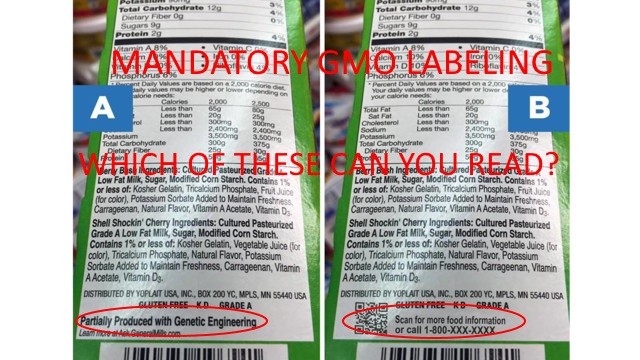RESTAURANT LEASING: Part 3 of 5
Restaurants are constantly adding and subtracting menu items to meet customer demand. Whether it’s adding healthy options for calorie conscious consumers, like salads and wraps, or craft cocktails and beers, rarely will a restauranteur review its lease prior to changing menu items. However, it’s important to know whether your lease is subject to an “exclusive use” provision granted to another tenant by the landlord. Violating this provision can be costly to wary restaurant owner.
For example, I recently spoke with a business owner who was sued by a neighboring tenant over the right to sell pizza. The business owner sold thin-crust artisanal pizzas as an appetizer, even though its neighboring tenant had an exclusivity clause in its lease to sell “traditional pizzas.” What qualifies as “traditional pizzas” is at the center of the dispute, but regardless of the outcome litigation is expensive and can be potentially avoided if an exclusive use provision is carefully crafted.
As a tenant, including an exclusivity clause in your lease may be key to maintain a competitive advantage over other tenants. While most large chain restaurants will require an exclusive use provision, it is just as (if not more) important for mom-and-pop restaurants to also insist on exclusivity in order to eliminate the competition within the tenant’s own backyard and help ensure a steady stream of potential customers. On the other hand, each time a landlord grants an exclusivity to one tenant it narrows the pool of potential tenants from which the landlord may lease space. No landlord wants to make it harder than it has to be to fill vacant space, or have to turn down a request from an existing tenant to change its use.
Tenants should seek an exclusivity clause that is a broad as possible that accurately captures the types of uses and businesses from which the tenant seeks to be insulated. While a tenant may want an exclusivity clause prohibiting any other restaurant use, this is probably an unrealistic and unnecessary request. Landlords will try to narrow the scope of the exclusivity in order to maintain flexibility in future leasing activities. As such, the tenant’s permitted and/or actual use may not be precisely the same as the tenant’s exclusive use. For example, a local coffee shop may seek the exclusive right not only to coffee sales, but also to the sale of tea. If the coffee shop also sells sandwiches, muffins and bagels, but those sales only make up a small portion of overall sales, the owner may not be as concerned about extending the exclusivity to full-service diners that serve breakfast. Conversely, a diner’s exclusivity clause may prohibit only businesses that derive more than a small percentage of their total sales from breakfast food items, such that the coffee shop and the diner could coexist within the same shopping center, as could a quick service sandwich shop. Further, the exclusive use clause could be crafted to prevent a national coffee chain from moving into the center, but might permit the diner and the sandwich shop to sell coffee.
But how is a tenant supposed to know whether their use will violate another tenant’s exclusivity clause or if a current use in the shopping center would violate the tenant’s exclusivity clause? Tenants can seek assurances in the lease from the landlord in the form of representations and warranties, but some landlords may object to such representations and instead agree to provide the tenant with all existing exclusives for the tenant to review on their own. Landlords may also carve out preexisting tenants from the scope of the exclusivity, so tenants should make sure to perform their own due diligence on the existing tenants. The parties may agree to add as a compromise that the landlord cannot agree to a change in the use given to a preexisting tenant if such change would violate the tenant’s exclusivity clause.
Exclusivity clauses may also extend within a certain proximity of the restaurant, which such restriction can apply to both landlords and tenants. Landlords may want to prohibit tenants from operating another restaurant in close proximity to its current restaurant, especially when the lease includes percentage rent, because this could lead to declining sales receipts. In order to prevent this from occurring, landlords may insist on a clause that prohibits a tenant from operating another restaurant with the same primary use within a certain radius of the existing restaurant. On the other hand, Tenants may seek to prevent the landlord or any affiliates of landlord from permitting a violation of the exclusivity within a certain radius of the shopping center. While landlord may resist including such a provision because it could affect the marketability of the shopping center, a reasonable compromise may be to carve out any existing tenants within the specified radius.
Another important consideration for restaurant tenants is the practical effectiveness of exclusivity clauses. Often tenants focus on obtaining the exclusivity language but neglect to address how to actually enforce this language in the event of a violation. Given the catastrophic effect a competing use may have on tenant’s business, a tenant will want extensive remedies for a violation of the exclusivity clause. Tenants should push for language discouraging landlords from ignoring the exclusivity restrictions and also requiring them to take action in the instance of “renegade” or “rogue” tenants who disregard the protected exclusive use. A tenant may negotiate the right to abate a portion of the rent during the period their exclusive use protection is compromised or permit the tenant to seek injunctive relief. In addition, tenants may seek to include a termination right in the event the violation continues for a certain period of time. Some landlords may permit a tenant to terminate the lease only if the violation is caused by a rogue tenant, the violation continues beyond a specified period and the violation has a material impact on the tenant’s business. After a specified waiting period, a landlord may well require the tenant to either exercise the termination right or start paying full rent again.
Exclusive use provisions in restaurant leases provide critical protection to a tenant’s business. A tenant’s ability to obtain acceptable exclusivity protection is often proportionate to their bargaining power with respect to the landlord and other tenants, and is also related to how the desired protective language relates to the overall negotiation of the lease. In the event a tenant is able to successfully negotiate exclusivity, such clause should be included in a Memorandum of Lease and the memorandum should be recorded with the appropriate recorder’s office in order to put other parties on notice of the existence of such exclusivity.
If you have questions about your restaurant lease, please contact our attorneys at Morsel Law.










